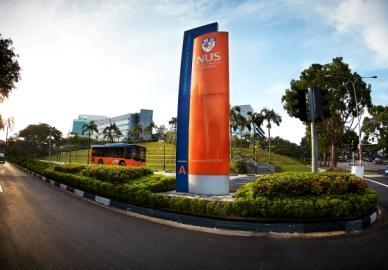The 2015 results of the QS University Rankings: Asia are out now. Click here to view the top 10.
The new edition of the QS University Rankings: Asia, released today, sees significant change at the very top of the table. With the National University of Singapore (NUS) reaching the top spot, this the first time in the ranking’s six-year history that the table has not been headed by a Hong Kong-based institution. Fellow Singaporean climber Nanyang Technological University (NTU) also consolidates its top-10 position, climbing three places to rank 7th, while the most impressive leap among the top 10 is claimed by South Korea’s KAIST, which progresses from sixth to second place.
 Strong progress for universities in Singapore and South Korea
Strong progress for universities in Singapore and South Korea
These moves at the top reflect the strong progress made by universities in Singapore and South Korea in recent years, showing a good return on government investment in higher education, particularly in the areas of research and internationalization. While Singapore strength lies predominantly in the successful nurturing of these two elite institutions – NUS and NTU – South Korea has succeeded in improving standards and international rankings performance across a large swathe of its more extensive higher education system. In addition to the high-level success of KAIST, 14 of the top 20 South Korean universities have improved their performance in the QS University Rankings: Asia this year.
 Lost ground for universities in Hong Kong, following “double cohort”
Lost ground for universities in Hong Kong, following “double cohort”
With NUS climbing one place to rank first, and KAIST ascending from sixth to second, the highest placed among universities in Hong Kong is the University of Hong Kong (HKU), which drops one place to third. Meanwhile last year’s table-topper, the Hong Kong University of Science and Technology (HKUST) slips to fifth, with Korea’s Seoul National University holding its ground in fourth. The slight decline experienced by universities in Hong Kong is partly attributable to the city’s change from a three-year to four-year undergraduate model in 2012; as a result, universities in Hong Kong have suffered in the indicator which assesses faculty: student ratio.
 Internationalization remains major challenge for universities in Asia
Internationalization remains major challenge for universities in Asia
Across universities in Asia, in both established and emerging higher education systems, internationalization remains a top priority – and in some cases, something of a stumbling block. Progress towards greater internationalization is assessed in the QS University Rankings: Asia by comparing each institution’s percentages of international faculty members, international students, incoming exchange students and outbound exchange students. Universities in Hong Kong and Singapore stand out for their success in attracting high numbers of students and academics from around the world; the top four scores for percentage of international students go to HKU, HKUST, NTU and NUS. In contrast, this remains a much weaker area for many institutions in Japan and China – though both countries continue to boast a large number of the leading universities in Asia.
About the QS University Rankings: Asia
Published annually since 2009, the QS University Rankings: Asia, highlights the top-performing universities in Asia, based on nine indicators. These are: academic reputation (from global survey); employer reputation (from global survey); faculty: student ratio; citations per paper (based on data from Scopus); papers per faculty member (also from Scopus); proportion of international faculty; proportion of international students; proportion of inbound exchange students; and proportion of outbound exchange students. See the methodology in more detail here.











